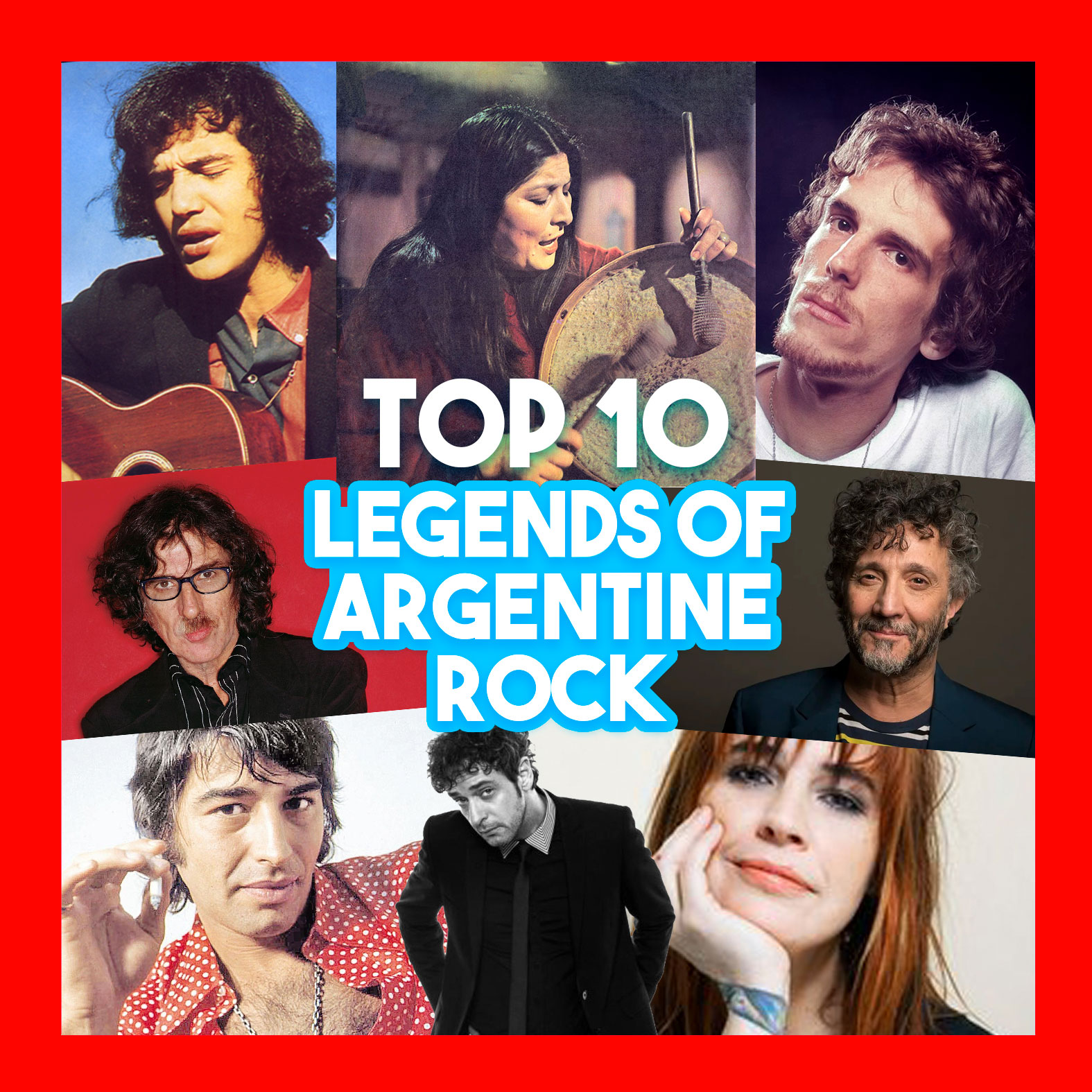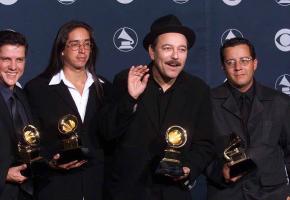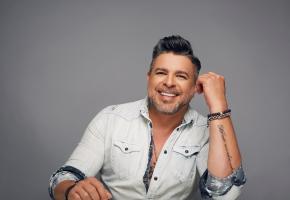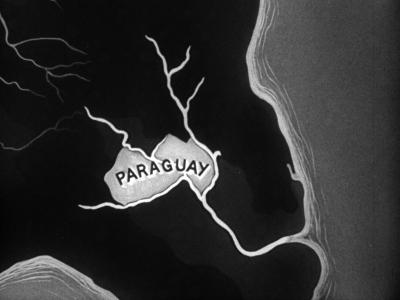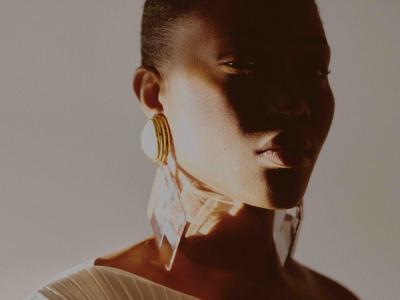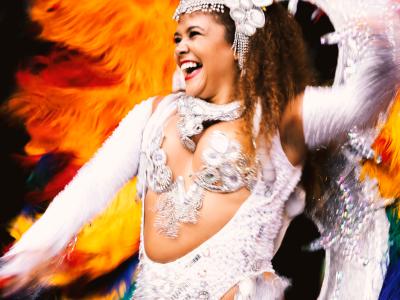1. Gustavo Cerati
One of the biggest stars of Argentine rock is undoubtedly Gustavi Cerati. Cerati’s key role as founder and principle singer-songwriter of Soda Stereo, arguably Latin America’s most famous rock band, catapulted him as a solo artist, which then earned him fame and fortune in Latin America and beyond. Gustavo Cerati became the rock star everyone in Latin America wanted to be, defining THE Latin Rock star with his definitive Latin coolness.
Tragically Cerati suffered a stroke while on tour in Venezuela and was in a coma for a year before dying. His death provoked outpouring one tributes, including from Bono, Chris Martin and Shakira, who dedicated a song to him. Cirque de Soleil even created a whole show around the music of Soda Stereo, which became its most commercially successfully show ever.
2. Charly Garcia. Identifiable by his bi-coloured moustache (half grey, half black) and often seen staggering onto stages in a somewhat altered state, his skinny frame flopping all over the keyboard, Charly Garcia is THE icon of Argentine rock. At age five he began studying classical music (Bach, Mozart or Chopin), at 12 he qualified as a teacher of music theory and by adolescence, influenced by The Beatles, The Rolling Stones and Bob Dylan, he formed the band “Sui generis” - a now legendary rock band. Garcia managed to escape military service on a bipolar disorder diagnosis and embarked on two decades of intense musical creativity. Contrasting to other 'Rock en Español', Garcia created a completely original and distinct sound, influenced by but by no means a copy of US and UK rock, and his albums of the 70s and 80s are up there among the world’s best rock, in any language.
Escaping the dicatorship, in 1977 Garcia went to Buzios, Brazil and formed "Seru Giran", with virtuous melodies and lyrics that, between irony and anguish, portrayed the situation under the dictatorship in Argentina. Returning to Argentina, he was summoned by Argentina’s dictator Videla, describing the experience in a song; “I never thought the devil could be so charming.” Managing to survive the dicatorship (perhaps due to his already iconic status), in 1982, “Seru Giran” organized a farewell’s gig, Don’t cry for me Argentina. That year, Garcia began a solo career, prolific and full of successes that gripped a generation.
The mid-90s saw Charly enjoying his newfound status as an elder stateman of Argentine rock. He released the album La Hija de La Lágrima, and his MTV Unplugged session, which shows the true artistry of his melodies, was a massive success commercially. Shortly afterwards, Charly released 'Say No More', an album that featured the phrase that would also serve as a sort of mantra for the musician in the next few years. Today, in his 70s, the puppet-like figure of ‘Charly’, is still the undisputed icon of Argentine rock. Many are astonished that he has survived not only the dictatorship which claimed the lives of many others ( ‘Tanguito’ to name but one) then years of drug addiction and alcohol abuse, over other seemingly less indulgent Argentina rock legends as Luis Alberto Spinetta and Gustvo Cerati, who both died before their time.
3. Luis Alberto Spinetta. Sadly passing away of cancer a couple of years back, Along with Garcia, Spinetta is often given the title of father of Argentine rock. Amidst deep political and social unrest in Argentina, Spinetta stood out as a voice of poetic rebellion. Influenced by writers, poets, artists and thinkers such as Rimbaud, Vincent Van Gogh, Carl Gustav Jung, Sigmund Freud, Friedrich Nietzsche, Foucault, Deleuze, Carlos Castaneda and Artaud, which bears his name even one of their albums, Spinetta could be called Charly’s poetic (though arguably more sane) counterpart
In 1967, Spinetta formed the band “Almendra” and having produced albums Almendra I & II, the band divided five years later, at which point Spinetta formed “Pescado Rabioso” eliciting a more aggressive, heavier form of rock. Next came the formation of “Invisible”, which saw echoes of jazz, enter Spinetta’s work. After some time working solo, Spinetta founded a fourth new group, “Spinetta Jade” in the early eighties. The nineties saw another collaborative effort under the name of “Los Socios del Desierto” but also a solo collaboration with Fito Paez. Like Charly, Spinetta is considered all around Latin America as a legend. To great national sadness, Spinetta died on February 8th 2012, at the age of 62, after suffering cancer.
4. Fito Paez. Another exquisite singersong-writer, Fito Paez is the only Argentine artist to have a song (Te Ví) featured on Caetano Velsoso’s best-selling tribute album to Latin American songs Fina Estampa, which the Brazilian sung in Spanish. It was in the late seventies that Paez, after touring with various bands, began his solo career. The album Del ’63 was released in 1984 to great critical acclaim. After the production of a second album, Spinetta, who was a celebrator of the young artist’s work, collaborated with him to create the album La La La. The late eighties showcase the angrier tones of Paez as the album Ciudad de Pobres Corazones reacted to the assassination of Paez’s mother and grandmother in the city of Rosario.
In 1990 he recorded "Third World" a window onto the American continent, based in his travels in Latin America…”rhe pagan festivals, the priests mingled with the terrorists, prostitutes trying to take away the money to the Americans. I said to msyelf, there's a very intense n powerful world down here. I wanted to reflect that.” The most important songs are Y dale alegría a mi corazón, which became a sort of hymn in Argentine soccer and Third World, defined grandly as the equivalent rocker Cambalache. The album El amor después del amor (1992) was the biggest selling album in the history of Spanish Language rock (600,000 copies). Paez went on to release many albums over the years, and his latest, Confia, came out in 2010.
5. Andres Calamaro is a huge name in Argentine rock of the last couple of decades and he has many devoted fans. He joined and wrote songs for “Los Abuelos de la Nada” but even before the dissolution of “Los Abuelos” had begun the journey of a solo career. In 1991, “Los Rodriguez”, formed in Spain and bringing together Calamaro, Ariel Rot, Julian Infante and German Villela were hugely successful internationally. Calamaro’s last solo album was released in 2010 and is called On the Rock.
6. León Gieco is characterized by mixing folk, rock and Argentine social and political commentary. With his undying committmet to human rights, the rights of indigenous peoples and solidarity with the marginalized – with Mercedes Sosa singing on behalf of the Madres de los Desaparecidos from the beginning. Gieco started working at an early age; at 7, he bought a guitar with his own money, and soon began to play it at school events. He formed a group that was dedicated to folklore, but in turn began playing in a rock band, "The Flies", which soon gained some popularity in the neighboring towns. In 1981, during the dictatorship; he gave a concert in Buenos Aires accompanied only by his guitar, his harmonica, and charango, and began a series of separate concerts over 110,000 km (in Argentina), for 3 years, playing for a total of 420,000 people. Gieco and Charly Garcia, joined Peter Gabriel, Sting, Bruce Speingsteen and Tracey Chapman at the final concert of an Amnesty International Tour ended in Buenos Aires oin 1988 infront of over 80,000. Along with with Mercedes Sosa and Victor Heredia, Gieco remains Argentina's foremost symbol of 'Canción Social'
7. The brilliant guitarist Norberto Napolitano otherwise known as ‘Pappo’ worked with “Los Abuelos de la Nada” in the late sixties and with “Los Gatos” in 1970, but he remains most famous and appreciated for his formation of the band “Pappo’s Blues”, and although the structure of the band changed over the years, the blues-rock melodies successfully heralded Pappo as the icon of Argentine blues. (B.B. King himself invited to play at Madison Square Garden). He settled in London, where to stay made all sorts of odd jobs. The English experience at the end would not last long: he was expelled due to visa problems. From there, he went one time to US (country to be back countless times) to return to settle in Argentina in the early eighties. Sadly he died at the age of 54.
8. Jose Alberto Iglesias, ‘Tanguito’ as he was most well known, must be considered in the top ten because despite his short career (the singer/composer died in 1972 at just 26 years of age) the artist held the most prominent role in Argentine rock’s progression from English to Spanish. A hugely talented composer, Tanguito had the bad luck to be dating the daughter of a military officer during the discatorship. Rather than 'disappear' him, the authorities locked up the more rebellious of the young Argentine rockeros in a mental institute, plied him with drugs until he died. This tragic story of the muiscian was told in the film Tango Feroz - The Legend Of Tanguito (1993) by the the famous film director Marcelo Piñeyro.
9. In a list lacking in female presence, Fabiana Cantilo is a shining beacon. Fabiana Cantilo was supporting various music acts when she earnt her opportunity with “Los Twist” as a lead singer. She collaborated with both Charly Garcia and Fito Paez and then went on to release her first solo album, Detectives. 1988 saw her form the band “Los Perros Calientes” and in 1993, the album Algo Mejor was released, an album which included songs written by Paez and Andres Calamaro.
10. Mauricio Birabent, better known as Moris, began performing at La Cueva, the club in Buenos Aires renowned as the backdrop for many emerging artists on the rock scene of the sixties. He is the founder of “Los Beatniks”, a band whose song Rebelde is credited as the first garage/rock song to have been recorded in Argentina. Moris was an important figure for his contribution to folk, rock and later, the influence of Argentine tango.


